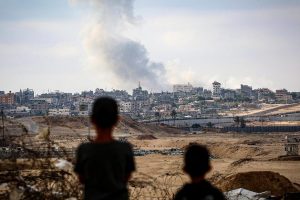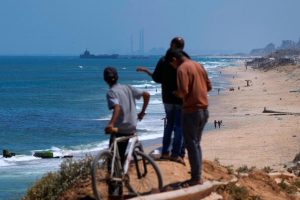
The last several updates (here and here), I’ve discussed the reasons Ukraine has failed to deliver a quick death blow to Russian forces in its current counteroffensive. That doesn’t mean Ukraine has failed. It just means that it has had to shift tactics, and it is slower going. But they are still putting severe pressure on the Russian lines, slowly pushing forward.
In short, Ukraine hoped that a show of force would quickly collapse Russian lines and break their fighting spirit. That never happened. The same weapons that have bedeviled Russian offensive actions—mines, drones, artillery, and anti-tank guided missiles—did a number on Ukrainian forces.
Ukraine has also been hampered by insufficient combined arms training, so much so that they ignored the greatest advantage of their new Western gear—night vision capabilities—and attacked during daylight, in full sight of the enemy. And even so, they still couldn’t pull it off. Combined arms is tough, and it was unrealistic to think they could learn it over a few months.
Yet there is a big difference between the Russian and Ukrainian failures. Russia, to this day, continues to suffer major losses as it is slow to learn from its battlefield disasters. Ukraine has had one big loss (early on, on the road to Robotyne), and a smaller one a week or so ago, and that’s it. Rather than follow up failure with more failure, Ukraine is quickly evolving and adapting.
For one, that means no more massed armor. It’s just too difficult to get through that network of mines, drones, missiles, and artillery. Instead, Ukraine is relying more heavily on nimble infantry, hand-clearing minefields, clearing Russian trenches and fortified tree lines, and using artillery and tank fire to support those efforts. It’s not maneuver warfare, but it seems to be getting the job done. We’re not seeing an endless parade of videos of destroyed Ukrainian gear nor massive Ukrainian casualties. Every time Russian propagandists recycle images and video of one of the two battlefield losses, it means Ukraine is doing something right.
As of now, there are three active zones, broadly speaking. In the southeast, Ukraine is pushing in Zaporizhzhia and Donetsk oblasts in three separate directions:
The left arrow aims toward Melitopol, which is the most strategic city in the entire map, and Russia knows it. Look at all those layers upon layers upon layers of defenses on the way to Melitopol, outside the map down and to the left. And as of yet, Ukraine doesn’t seem to have reached any of those yellow lines anywhere.
Ukraine advanced a handful of settlements in this direction before either losing interest or hitting too much resistance. Though if Russian Telegram is to be believed (I wouldn’t put too much stock in it), Ukraine made some incremental gains along this advance overnight.
The middle arrow is in the direction of Robotyne, where Ukraine’s too big losses were recorded. Yet Ukraine persists, and Russian Telegram was replete with reports of a major Ukrainian attack in this direction—heroically repelled, of course. This is the second most strategic direction, as it’s on the way to Tokmak, circled in yellow in the map above. Russia has literally surrounded it with defenses given its importance.
Why is Tokmak important? Most of Russia’s logistics in this entire front run through Tokmak. RO37 did one of his explainers about Tokmak. Go check it out.
Ukraine doesn’t have to reach Tokmak to seriously threaten Russian logistics, however. Measuring from the northern edge of Robotyne to the southern corner of Tokmak, the distance is 27 kilometers. Tokmak is already within GMLRS rocket artillery range, but those rockets are scarce and expensive at over $100,000 each. But tube artillery firing M795 rounds have a range of … drum roll please … 30 kilometers! Well not regular cheap rounds, but extended range 155mm shells, reportedly costing around $8,000 each, are still a fraction of the cost of a GMLRS rocket. Much of Tokmak’s utility as a logistics hub could be significantly degraded by Ukrainian tube artillery sitting a couple of kilometers behind a Ukrainian-held Robotyne.
The third, most eastern approach on the map above, is toward the port city of Mariupol. This is also Ukraine’s most promising effort. Not only have Ukrainian forces made some respectable headway, but as you can from the map, this direction features only a single major defensive line.
Further north from this map, Ukraine is making headway both north and south of Bakhmut, and has occupied the commanding heights around the western part of the city.
Just like I never understood why Russia expended so much effort in capturing the town, I don’t get why Ukraine is expending effort in retaking it. It’s strategically unimportant. My guess is that Ukraine is advancing around here simply because they can. Russia has heavily defended the southeast, so by threatening Russia’s beloved Bakhmut, taken at a frightful cost, perhaps Ukraine hopes to pull in Russian reservers.
Moving up even further to the north, Russia has been going on the offensive around Kreminna and toward Kupiansk (remember that town?). The effort has been serious enough that it has likely required Ukraine to commit forces it would rather use in the counteroffensive. War can often be a game of chess.
Russian propagandists aren’t subtle, are they? Here’s the head of RT Margarita Simonyan:
Note, this “famine” isn’t Europe. Ukrainian grain destined to European markets get there via rail. This famine is Africa.
Russia wants African to starve, because then, maybe, the West will cave to Russian cruelty.
The problem for Russia is that the West doesn’t actually care about Africa. That’s been the problem all along.
Russia certainly never learned the adage that you can catch more flies with honey than with vinegar. Their propaganda isn’t about working together with allies for the common betterment of all. For Russia, that’s weakness. They’re all about threats and nuclear weapons blah blah blah. For example, one of them got the brilliant idea that the West would get the message that Russia isn’t a joke of a nation if it—get this—blows up the North Pole.
The exchange is actually quite hilarious:
First guy: We could demonstrate [nuclear weapons] at the North Pole.
Second guy: In order to win this war, you are proposing that we blow up the North Pole?
First guy: Why are you twisting my words?
And that wasn’t all. Here’s another hilarious exchange:
First guy: We should move on to non-traditional ways of using nuclear weapons, including heavy duty nuclear warheads.
Second guy: Using them? Using nuclear weapons?
First guy: I dd not say using them.
Second guy: You said “using them”
First guy: You obviously misread it. I was not talking about using them.
Of course he said “using them”! These jokers have nothing.
But maybe they should be careful. A report by a member of the State Duma (Russia’s pupped legislature) calls for authorities to “take repressive measures against those who are insane and with whom it is impossible to negotiate.” It warns of “a militia of people who know how to hold a gun is being formed around Girkin-Strelkov.”
The report was written before the Wagner mutiny, but that was all the excuse necessary to spring the plan into action, which led to Igor Girkin’s arrest this week. But here’s the thing, the report doesn’t stop there, but urges action against propagandists who are “whipping up critical hysteria.” Among those? Simonyan, the head of RT who was cheering mass famine up above. Also mentioned is Vladimir Solovyov, who hosts both a daily radio show and evening TV show and is regularly translated for his fascist-eliminationist rhetoric.
These are all figures who have built large followings by promoting and criticizing the war effort from the nationalist right. As the report notes, “Liberals and hipsters are demoralised and have also largely left the territory of the Russian Federation and cannot play a significant role” in undermining Russian society. It is the nationalists who are the greatest danger: “For example, in the programme ‘Evening with Vladimir Solovyov’ there is every time essentially a gang rape of the authorities. The speakers are constantly kicking the authorities for various shortcomings in their activities.”









